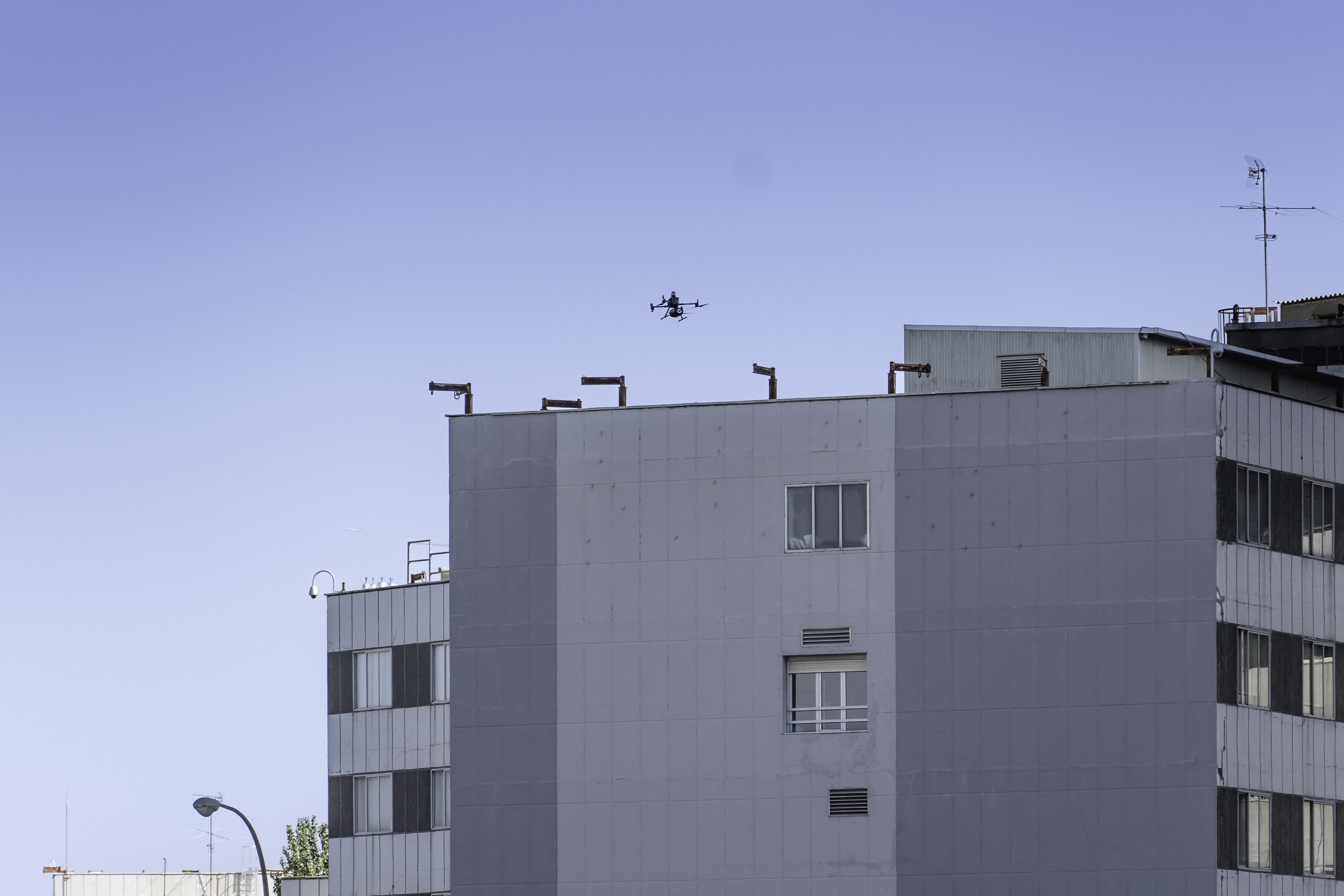
September 17, was a very special day for Bluenest by Globalvia and for the promotion of Advanced Air Mobility in our cities.
On the occasion of European Mobility Week, we held the event “The Healthcare Transport of the Future: logistics drones for last-mile intra-hospital connectivity within the framework of the European U-ELCOME project”, in which our team successfully carried out a new flight demonstration with a logistics drone for the transport of medical supplies between the Carlos III Hospital and the University Hospital of La Paz.
It is a conference organized jointly with the Ministry of Housing, Transport and Mobility of the Community of Madrid and the University Hospital of La Paz and is part of the European U-ELCOME project, whose objective is to promote the implementation of a series of U-Space services and procedures for the integration and safe and effective management of drone traffic in European airspace.
The event was attended by more than 100 guests, including public administration officials, industry partners and, in general, a convinced and passionate public about urban air mobility.
The event included high-level speeches by Benito Núñez, Secretary General of Air and Maritime Transport of the Ministry of Transport and Sustainable Mobility, José María García Gómez, Deputy Minister of Housing, Transport and Infrastructure of the Community of Madrid, Almudena Quintana, General Director of Assistance of the Community of Madrid, Rafael Pérez-Santamarina, General Director of the La Paz University Hospital, Enrique Maurer, CEO of ENAIRE and José Ignacio Rodríguez, Managing Director of Bluenest by Globalvia.

After the institutional opening of the event, which was held in the Caleido event space, the guests went up to the viewpoint, from where the flight was visualized.
The drone took off from the roof of one of the buildings of the Carlos III Hospital and landed at the Hospital de La Paz, crossing in just three minutes the distance between the two buildings, which is 1.5 km by road and about 900 meters in a straight line, flying at a distance of 30 meters from the ground.
The flight included a “handover”, that is, a transfer of control of the drone in which the first pilot, our colleague Darío Ares, -Senior UAM UTM Programs Manager at Bluenest-, began the journey and the second, Rafael Higuera, -Head of Technology at Bluenest-, took control at the intermediate point, taking it to the landing area, ensuring continuous control of the aircraft at all times. Our colleague Daniel Molina, -Head of Operations at Bluenest-, played the role of Visual Observer (OV) to monitor the airspace in case of any eventuality.
At the same time, our colleague Ignacio Rodríguez, broadcasted the main milestones of the operation that were being visualized on the screen of the Bluenest Mobile Flight and Vertiport Control Center.

"We are very proud to be able to lead, together with ENAIRE, the Community of Madrid and the Carlos III and La Paz university hospitals, this milestone in the implementation of advanced and sustainable air mobility in Spain. This proof of concept of medical transport using unmanned electric drones and an advanced vertiport control center is a key step in our commitment to providing safer, more predictable, efficient, quiet and environmentally friendly logistics solutions. Madrid represents an ideal urban environment to validate this new model, and we trust that this collaboration will lead the way towards a fully integrated and operational network of vertiports throughout the national territory.”With this test, Bluenest by Globalvia reaffirms its role as a key player in the development of sustainable, safe and efficient air mobility solutions, consolidating its leadership in the integration of advanced technologies in health and urban transportation", said José Ignacio Rodríguez, Managing Director of Bluenest by Globalvia.
The distance between both hospitals is 1.5 km by road and about 900 m in a straight line. The flight, which lasted around 3 minutes, required operational authorization from the State Aviation Safety Agency (AESA), a specific study of the operation and a risk analysis. The aircraft used, a DJI Matrice 350 RTK, had a parachute, an automatic flight termination system and a containment system to guarantee safety in the event of any eventuality.The drone took off from the roof of one of the buildings of the Carlos III Hospital, flew over garden areas, hospital buildings and roadways until landing on the roof of one of the buildings of the La Paz Hospital. The operation was carried out at 30 meters high and was coordinated by two Bluenest pilots, certified specifically for this operation. The flight included a “handover”, that is, a transfer of control of the drone in which the first pilot began the journey and the second took control at the intermediate point, taking it to the landing zone, ensuring continuous control of the aircraft at all times.
To reduce practically all risks to a minimum, both pilots had airband transmitters to coordinate with possible manned aircraft and a Visual Observer (OV) who monitored the airspace and warned of any eventuality.During the Bluenest operation, U-SPACE services were used to determine the position of the drone and ensure that there were no other unmanned aircraft in the vicinity. In addition, through an ADS-B receiver integrated into the same Bluenest operation interface, data from manned aircraft was incorporated. In this way, it was ensured that the urban airspace was completely free of threats that could disrupt the operation.
This exercise in Madrid demonstrates the viability of transporting medical supplies using drones in urban environments, as well as the ability to integrate U-Space digital technology to reduce risks in the air and on the ground. With this initiative, Bluenest reaffirms its role as a key player in the development of sustainable, safe and efficient air mobility solutions, consolidating its leadership in the integration of advanced technologies in healthcare and urban transportation.